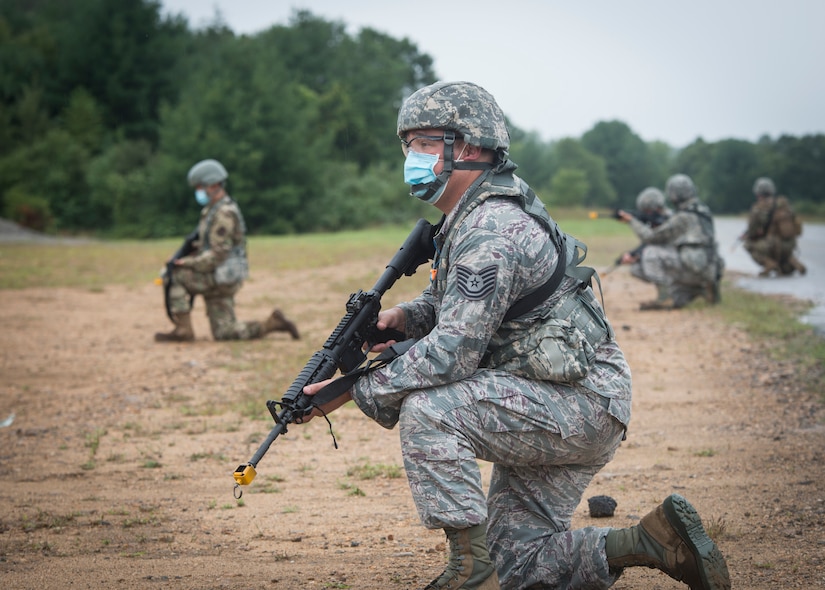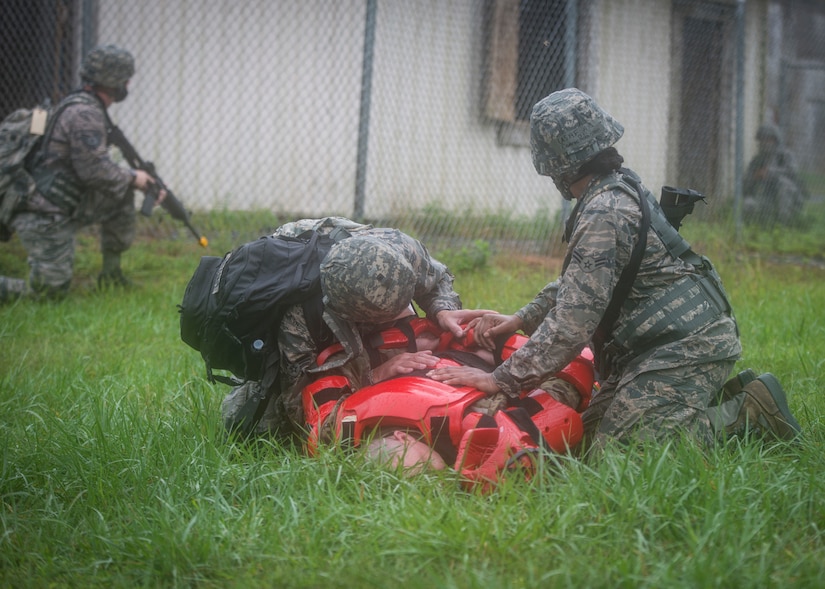Sept. 18, 2020 |
The COVID-19 pandemic has presented new challenges to training multiple large groups concurrently. Members of the 103rd Civil Engineer Squadron, 103rd Security Forces Squadron, 103rd Logistics Readiness Squadron and 103rd Medical Group combined their expertise to conduct key readiness training while protecting the health of participants.
The course, held at Stones Ranch Military Reservation, East Lyme, Connecticut, trained the 103rd Civil Engineer Squadron in expeditionary operations to maintain their deployment readiness.

"The four key things are convoy operations, individual movement techniques, integrated base defense and entry control point operations," said Air Force Tech. Sgt. James Diederich, 103rd Civil Engineer Squadron HVAC shop supervisor. "We have the subject matter experts here to teach us how to do it."
Instructors from the 103rd Security Forces Squadron worked in tandem with a civil engineer squadron planning committee to design the course, allowing them to teach their expertise and meet the civil engineers' training requirements. This provided a mutually beneficial training experience for members of both squadrons.
"The Guard is great for that because you have people with different backgrounds," said Air Force Tech. Sgt. Dedrick Baublitz, 103rd Security Forces Squadron training planner and instructor. "We have people that are police officers and medics on the civilian side within CE [civil engineering], so some of the things we train are things they can elaborate on to help the other trainees if they're having trouble. They learn from us, we learn from them, so it's a win all around."
Having local experts and a training area close by make a difference in being able to carry out the training, Diederich said.
"Especially now, during the pandemic, we've lost a lot of opportunities to send people to training, so the fact that we have these guys right here and this facility in the state has allowed us to meet our objectives without too many obstacles," Diederich said.

Members of the 103rd Medical Group's public health team helped ensure proper health protection measures while the 103rd Logistics Readiness Squadron provided vital transportation to participants.
"We coordinated prior to their training to make sure they had all the proper risk mitigations in place and made sure lodging, transportation and PPE [personal protective equipment] were all set up before they got there," said Air Force Tech. Sgt. Sara Beaudry, 103rd Medical Group public health noncommissioned officer in charge. "We went down and briefed proper PPE measures and trained people to conduct patient screening to make sure nobody became ill, and that if anyone did, we could break the chain of infection."
The public health team had help from 103rd Civil Engineer Squadron firefighters, who helped conduct health screenings and served as subject matter experts while participating in the training course.
"It helps that they are firefighters and EMT-trained, so they have seen COVID-19 cases and know what to look for," Beaudry said. "They are also very supportive of us going there and were extremely receptive [to] all the information we gave them."
Public health is helping to make sure the 103rd gets the mission accomplished while keeping the health of the force the top priority, Beaudry said.
"Preventative health is the best way we can mitigate risk to any population," Beaudry added. "Simple things like hand washing and wearing masks are in place to protect each other and to make sure we can get the mission done and stay healthy."
(Air Force Staff Sgt. Steven Tucker is assigned to the 103rd Airlift Wing).
No comments:
Post a Comment